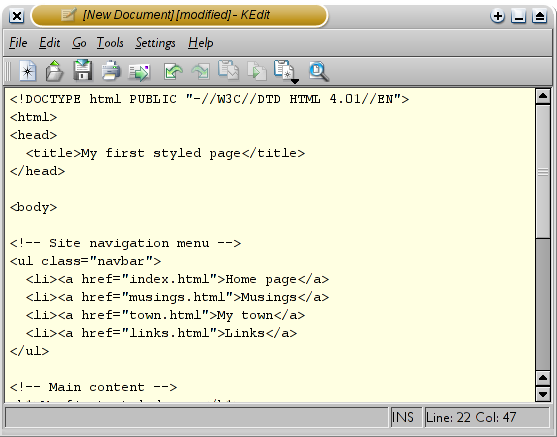URL

URL, short form for Uniform Resource Locater is the global address of documents & other resources online. It is also known as an internet adress. A URL contains access protocol (http), the domain name (www.blogger.com) & the path to a file or resource residing on that server (.com, .net, .zip, .xml).
HTML
HTML is the short for HyperText Markup Language, the language used to create text & multimedia documents on the World Wide Web. HTML uses a variety of tags & attributes to create a document or a web page. A correct structure for an HTML document starts with <HTML><HEAD>(enter here what document is about)<BODY> and ends with </BODY></HTML>.
Javascript
Javascript is a scripting language used by web authors to design interactive sites. It is used in Web developments to automatically change a formatted date on a Web page, cause a link-to page to appear in a popup window & cause text or graphic image to change or animate during a mouse rollover. JavaScript code can be imbedded in HTML pages and interpreted by the Web browser.
Applets
A small application that performs one specific task under the control of a larger application, typically a Web browser. It is designed to be executed from within another application & cannot be executed directly from the operating system. Applets are small in files size, highly secure & ideal for small Internet applications accessible from a browser.
Blogs
It is an online journal usually maintained by an individual used to document their events in life or state their opinions intended for general public consumption. Blogs are usually updated on a regular basis. A typical blog may include text, images, videos, links & other forms of media. This blog itself is an example of a blog.
Wikis
Wiki is derived from a Hawaiian phrase, "wiki wiki" which means super-fast. An example of Wiki is Wikipedia. It allows users to add, update & edit content on the site by using their own Web browsers. Wikis are powered by Wiki software & are often used to create collaborative works.
FTP
FTP is short for File Transfer Protocol, which allow files to be exchanged between computers on the Internet. To transfer files using FTP, a program called a "client" is needed. It creates a connection to a remote computer running FTP "server" software. After a connection is established, the client may choose to send a receive a copy of the file. To connect to an FTP server, a client requires the username & password set by the administrator of the server. FTP is mostly used on the Internet to upload & download files.
Plug-in
It is an add-on for a program to add extra features or functionality to it. Plug-ins are a convenient way to expand the capabilities of a program. Examples of plug-ins are shown on the picture above.
Filters

It is a program that is designed to accept a certain type of data as an input, transforms it & outputs the transformed data. An example is shown on the picture above. The names are sorted in an alphabetical order because it has filtered the unsorted order & has outputted the sorted names in an alphabetical order.
Internet Security Suite
It contains a suite of utilities to maintain the security of the computer. Utilities such as spam blocker, antivirus, personal firewall & pop-up blocker are included. These are to protect the computer against virus or threats online that can corrupt your computer.








0 comments:
Post a Comment